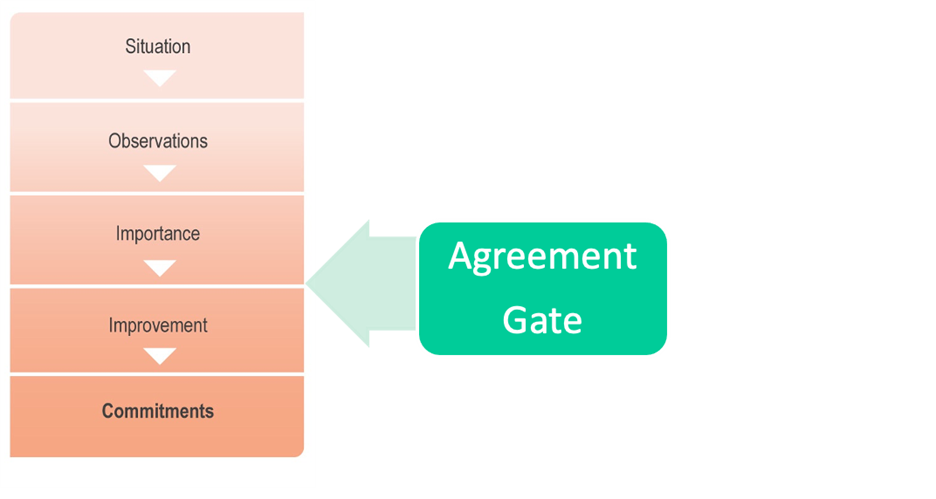What do you do when your coachable moments are not enough to resolve performance problems?
In the normal course of your day-to-day leadership and management, you have coachable moments that serve towards developing your people and increasing their success towards their goals. When goals and expectations are clear, performance hums along, and you provide a mix of informal and formal coaching. Ultimately, when the employee’s competence and confidence builds, your coaching becomes more of a partnership with high support.
Today we’re going to talk about those moments in your management, leadership, and coaching of your team, where a team member’s performance is beginning to, or has declined. It’s not always obvious why performance is declining; we see results worsening, but don’t always know whether it’s a skill or will issue, or even something personal impeding success.
So, when we confront performance problems, we have three objectives: first, correct performance problems: second, develop commitment to continual improvement; third, maintain positive relationships. Note that addressing performance problems with feedback is different than criticism.
Our focus is on the problem, not the person. Rather than general criticisms about how performance is waning, we want to be specific about what the problem is and focus on change, not blame. It’s not about you, it’s about the relationship. An example of criticism: “Joe, you’re making my life difficult because of your terrible attitude. My boss is calling me all the time because of it, and customers are complaining as well.” While this is efficient for the manager, its ineffective for the employee and will likely trigger a defensive reaction.
So when do you have this kind of performance problem feedback discussion? You use confronting techniques when…
- The employee UNDERSTANDS the task
- The employee is ABLE to complete the task
- All of your attempts at ALIGNING the employee’s MOTIVATORS has failed and the employee is choosing to ignore or reject the required objective
When these situations occur, it’s important to address when the missed objective is causing significant disruption to their, the team’s, or to your performance and MUST be corrected.
This is about attempting to stop destructive behavior and improve positive behavior BEFORE you are obliged to contact HR.
Here is a simple framework you can use to prepare to deliver feedback around performance problems. In a moment we’ll talk about what the Agreement gate entails.

First off, you need to be VERY clear about why you are having this discussion. This is NOT the time to start with “plusses” or general positive comments about the employee, which will likely make the person feel set up and possibly dismiss the problem you’re about to discuss.
Name the issue; no sugarcoating here. THEN move quickly into sharing your specific observations.
Next, you describe the behavior, using quotable quotes and facts to outline the problem performance. In a previous blog I talked about the feedback acronym QBO – quote, behavior, outcome. This is a perfect time to use that feedback process because the Outcome is the Importance here. Why is it important to solve this problem. Now, here’s where the Agreement Gate comes into play. We do not move past this step until the employee AGREEs that there is a Problem that must be Solved. Otherwise, you risk moving forward to improve the situation when you don’t have agreement from the employee that there IS a problem. Good luck seeing change in that scenario.
This is a good time to get them involved in the discussion. Get their perspective; see if you can find out what the underlying competence and commitment issues are. You’ll need to listen well and be flexible in your coaching style.
Once the employee understands that there is, in fact, a problem that must be solved, we begin to explore specific behavior changes which will correct the performance issue.
It is possible that you can involve the employee in the problem-solving discussion by asking THEM for their ideas on how to change the behavior in the future. When it’s their ideas, they are more likely to implement them, which builds a sense of ownership.
Lastly, don’t fall into the trap of being so relieved that they see the problem and are willing to fix it that you let them go before confirming next steps. Specific actions which are measurable are required, so establish SMART goals and expectations. Also, include the frequency of the feedback/check back. Their development level and the severity of the problem will drive how frequently you check in.
Performance problems can be blips in the road if handled well. Taking a careful, thought out approach to addressing the situation can yield performance improvement as well as build trust. Tailor your coaching to each employee and situation to build self-sufficiency, competence, and confidence in their ability to execute effectively and drive performance.

